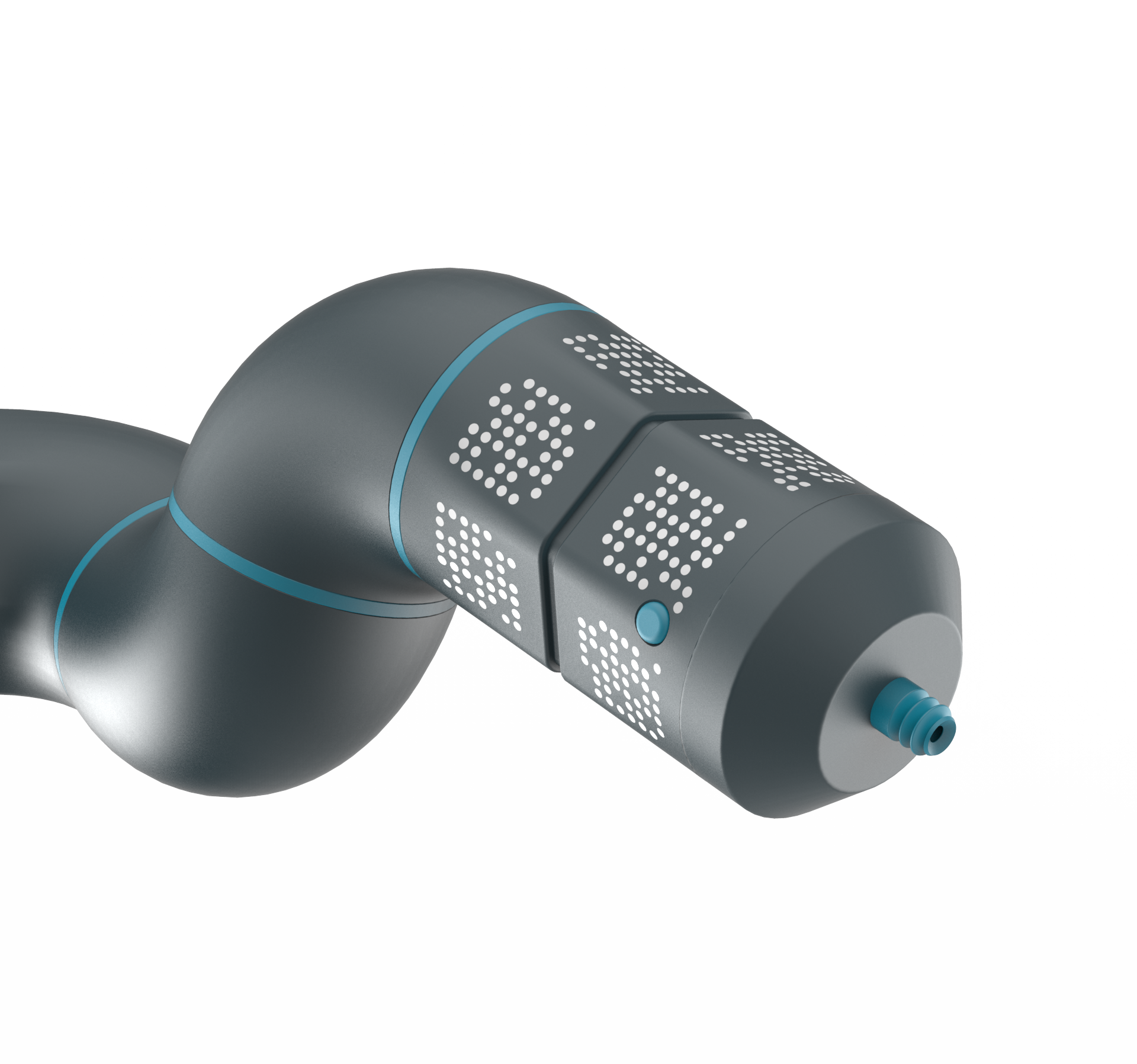
Visero
Industrial Design, Business Design, Branding, Animation
Solidworks, Keyshot 7, Adobe After Effects, Form 2
October 2018
Industrial robots are still clunky and expensive. Rovi Robotics came up with a way to make them smaller and smarter by using visual markers on the body and image processing software. We helped them rethink their communication strategy and brand.
The Design Brief
It was important for us as design consultants to work with the current state of the technology and the company. At that point, it didn't make sense to think about the user journey of a technician who has to service the robot. It was more important to think about how to attract customers and explain the technology to them.
It is also important that we distinguish between what the start-up wants from us and what they need.
Initially, RoVi said, "We need a robot arm that uses our technology to attract customers and explain our technology." But that really isn't what they needed. After much consideration, we changed the design brief to:
“We need to attract customers and explain our technology.”
Form Follows Story
After several rounds of brainstorming and workshops, we decided to design a robot after all—but with one difference. This robot arm would be just for trade-fairs and exhibitions to demonstrate the technology only. This means that the functionality of the product becomes less important than the message it conveys to potential customers. We made the robot arm as small as possible—smaller than anything in the market by some distance. And we gave it visual markers with a pattern that would stand out.
While the main purpose of the robot was to attract customers and explain the technology to them, it also had to be technically feasible, in case it was to be produced in the future.








Identity
A solid and professional corporate identity makes it easier for customers to trust the company. We let the product and the technology dictate the corporate identity. The logo is again based on the hexagon, but also alludes to the fields of view of three cameras. The name "VISERO" comes from the phrase 'vision sensing robots', but also translates from Latin roughly to the prophetic sentence: “I will have seen.”
Explainer Video
Along with the hardware, we also produced an explainer video that further elaborates on the technical solution. The storyboard was created and agreed upon first, before we used SolidWorks, Keyshot7 and Adobe After Effects to make the minute-long animation. The video can be used on the website as well as during trade-fairs.
Takeaway
UX Design is often about attention management and getting the user to ask the right questions.
Experience design is often about directing the users' attention, using storytelling, whether it is through product design, interface design or graphic design. Before we started the project, the technology was so complicated that we didn't know what questions to ask the start-up, just like the customers! But when customers looked at our design, they immediately asked one of two questions:
"How is your robot so small?"
"What are the patterns on the body for?"
This was the goal to begin with because the answer to these questions directly explain the technology. A lot of the times, designers get paid to elicit the right question from the user.
The product started out as a jumble of cables, overly technical, not interesting and intimidating.
The VISERO robot arm is approachable, polished and overall, more interesting to interact with.
Project done in collaboration with Camilo Toloza, Johannes Weckerle, Laura Schütz and Visevi Robotics.






